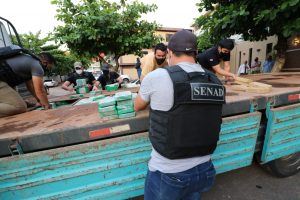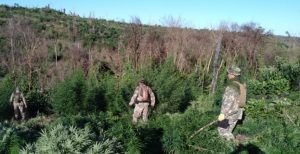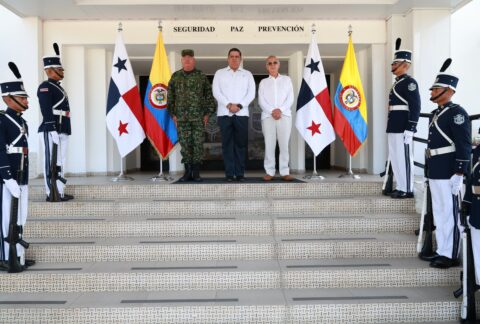On March 17, during Operation Olympus (Operación Olimpo), agents of the Paraguayan National Anti-Drug Secretariat (SENAD, in Spanish) intercepted a truck carrying 574.8 kilograms of cocaine hidden in a false-bottom.
The operation occurred at the Carmelo Peralta crossing in Alto Paraguay department, 700 kilometers from Asunción, in the region known as Chaco Paraguayo.

“The drug probably belongs to a criminal organization that engages in trafficking cocaine to Brazil,” SENAD said in a statement. “The shipment likely reached Chaco territory on flights from Bolivia and was to be taken to the north of the country,” the statement added.
According to intelligence reports, members of the group introduced large shipments of cocaine from Bolivia, using light aircraft to reach clandestine runways in Alto Paraguay.
“They then transported the drugs by land to Amambay department. The final destination was allegedly the Brazilian market,” the Paraguayan newspaper Última Hora reported.
Authorities also intercepted a van that was escorting the truck. In total, they arrested three people.
100 tons of marijuana
SENAD also intensified operations in forested areas where criminals conceal illicit cannabis crops. In two weeks, agents destroyed plantations equivalent to 108 tons of marijuana.

The first operation took place in early March, when agents destroyed more than 18 tons of marijuana in the San Rafael Forest Reserve, Itapúa department. “This operation has a direct impact on criminal organizations with a presence in Argentina,” SENAD said.
On March 11, agents entered Colonia Taguató, in the same reserve, where they destroyed 69 tons of marijuana.
According to analysts, Itapúa is an important transit corridor for smuggling marijuana to neighboring Argentina.
“Drugs are trafficked through the Paraná River to Encarnación, the capital of Itapúa, connected by a bridge to Posadas, capital of the Argentine province of Misiones,” the organization InSight Crime said in a report in February 2021.
In another operation on March 15, SENAD eradicated 21 tons of marijuana in Colonia Bella Vista, Caaguazú department.
Deforestation for marijuana crops raises concerns among authorities. “The narcotrafficking groups have recently established several drug production centers in the country’s extensive forests, destroying protected wilderness to grow marijuana,” the Paraguayan newspaper Hoy reported.
The Mbaracayú, San Rafael, Morombí, and Caazapá protected areas are the most affected. According to a report by the World Wildlife Fund, 9,107 hectares were deforested in these four reserves between 2004 and 2020. Of this total, at least 2,350 hectares have marijuana plantations, the Paraguayan newspaper La Nación reported.









